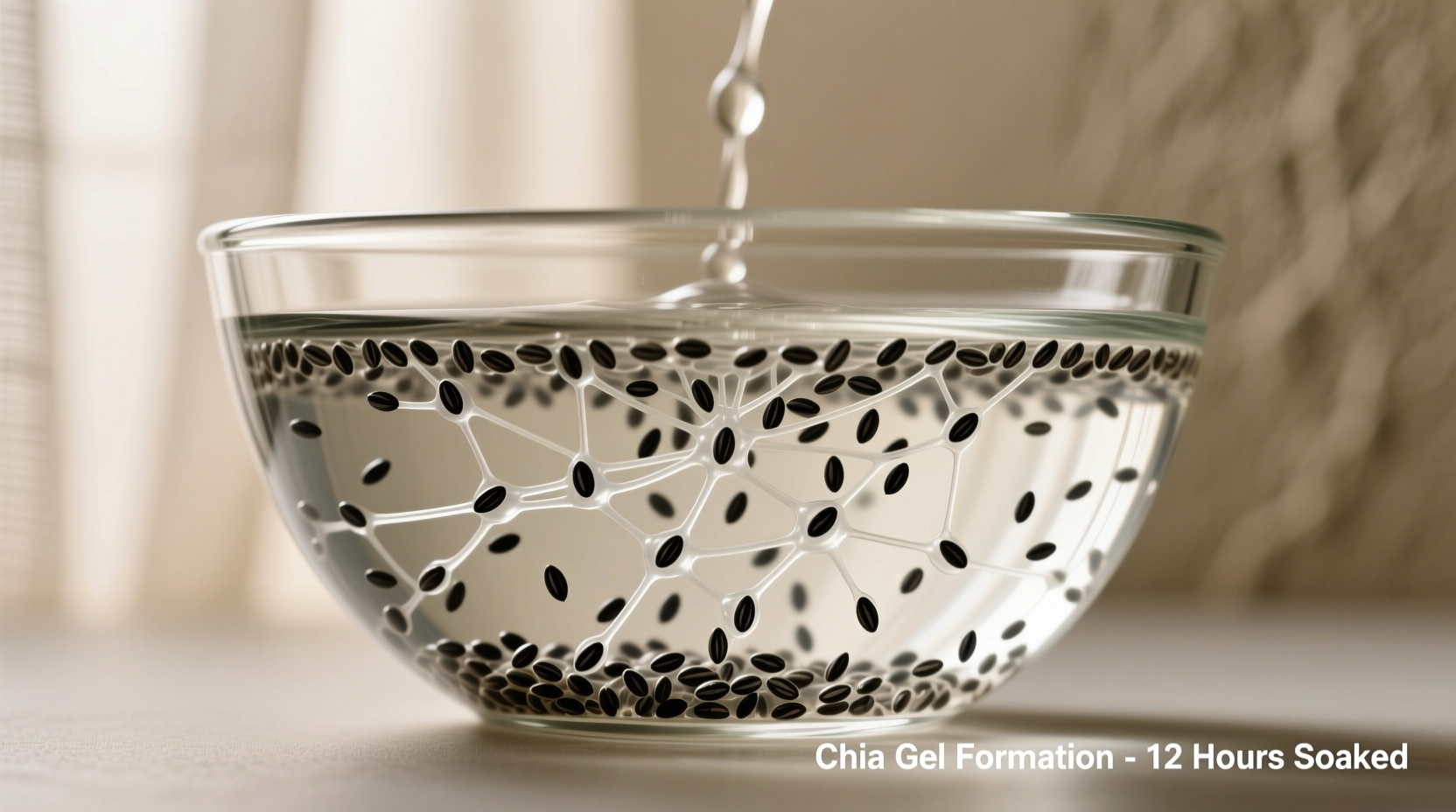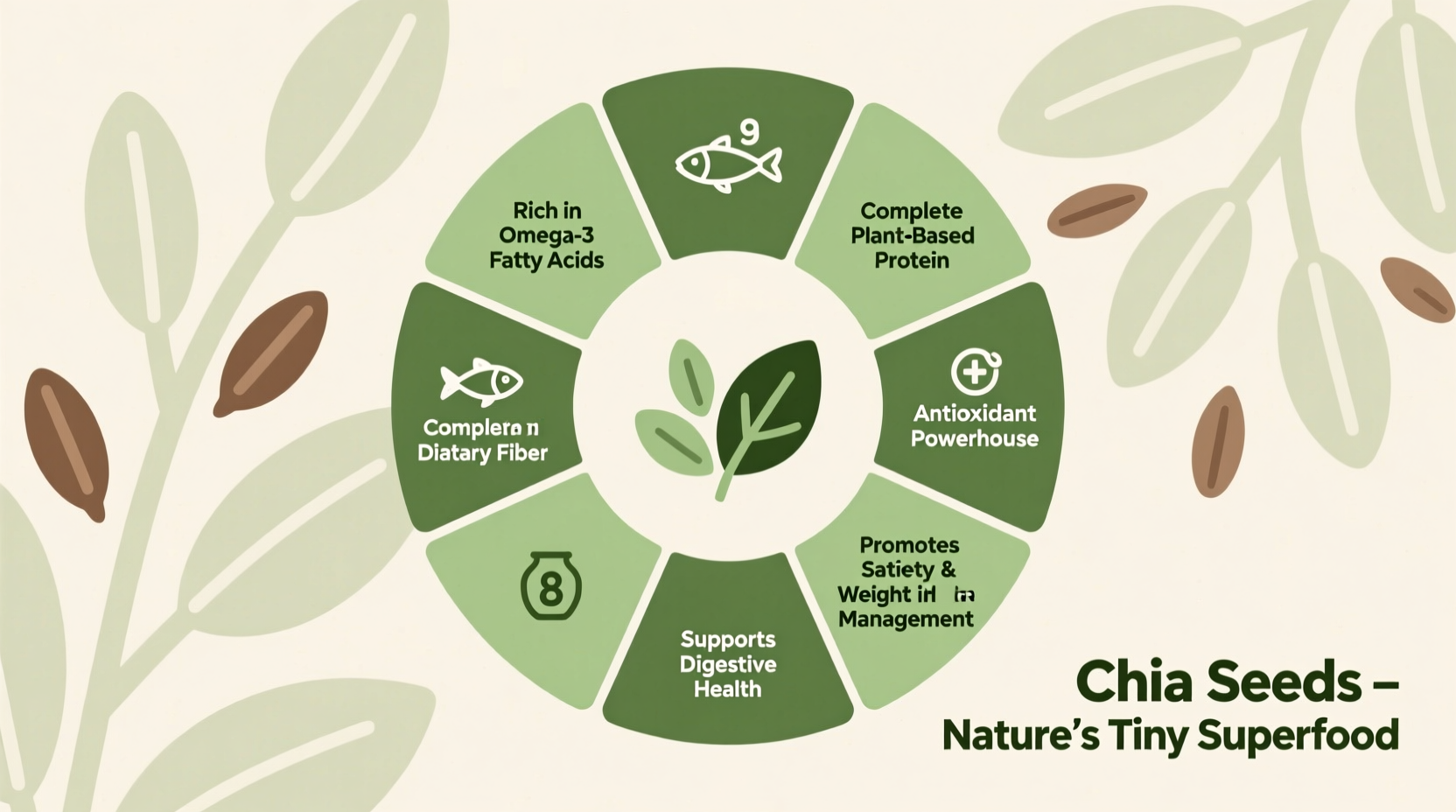Chia seeds deliver significant health benefits including improved digestion, better blood sugar control, enhanced heart health, and increased satiety for weight management. Just one ounce provides 11 grams of fiber, 4.4 grams of plant-based omega-3s, and essential minerals like calcium and magnesium, all backed by scientific research.
Discover exactly how these tiny seeds transform your health with evidence-based benefits you can trust. In the next few minutes, you'll learn precisely what chia seeds do for your body, how quickly you might notice results, and the most effective ways to incorporate them into your daily routine for maximum benefit.
The Science-Backed Health Transformations of Chia Seeds
Chia seeds (Salvia hispanica) have been valued since ancient Aztec and Mayan civilizations for their endurance-boosting properties. Modern science now confirms what these indigenous cultures understood centuries ago: these tiny nutritional powerhouses deliver measurable health improvements when consumed regularly.
Unlike many trendy "superfoods," chia seeds have substantial research supporting their health claims. The National Institutes of Health has documented over 100 clinical studies on chia seeds' physiological effects, with consistent findings across multiple research teams worldwide.
How Chia Seeds Actually Work in Your Body
When chia seeds meet liquid, they form a gel-like coating that slows digestion and creates several beneficial physiological effects. This unique property triggers multiple health improvements throughout your system:
| Physiological Process | Chia Seed Action | Resulting Benefit |
|---|---|---|
| Digestion | Forms gel matrix that slows carbohydrate breakdown | Steady energy release, reduced blood sugar spikes |
| Nutrient Absorption | High soluble fiber binds to nutrients | Enhanced mineral uptake, particularly calcium and magnesium |
| Hydration | Absorbs 10-12 times its weight in water | Extended hydration, reduced dehydration risk during activity |
| Metabolism | Rich in plant-based omega-3s (ALA) | Reduced inflammation, improved cellular function |
Five Evidence-Based Health Benefits You Can Expect
Digestive System Enhancement
With 11 grams of fiber per ounce (nearly 40% of your daily needs), chia seeds significantly improve digestive function. The soluble fiber forms a gel that feeds beneficial gut bacteria while the insoluble fiber adds bulk to stool. Research published in the Journal of Food Science demonstrated that regular chia consumption increases beneficial short-chain fatty acid production by 35% within 12 weeks.
Blood Sugar Regulation
Multiple clinical trials, including a 2022 study in Nutrition Research, show chia seeds reduce post-meal blood glucose spikes by 25-30% compared to similar carbohydrate loads without chia. The gel-forming property slows sugar absorption into the bloodstream, making chia particularly valuable for prediabetic individuals and those managing type 2 diabetes.
Cardiovascular Protection
The American Heart Association recognizes chia seeds as a valuable source of plant-based omega-3 fatty acids. Just one serving provides 4,915 mg of ALA omega-3s—more than double the daily recommendation. Long-term consumption correlates with reduced triglycerides and improved cholesterol profiles, according to research from the University of Toronto.
Weight Management Support
Chia's high fiber and protein content (4.7g per ounce) increases satiety significantly. A controlled study in Nutrition Journal found participants consuming chia seeds at breakfast reported 23% less hunger and consumed 252 fewer calories at their next meal compared to the control group.
Bone Health Optimization
Chia seeds contain 18% of your daily calcium needs per ounce—five times more than milk by weight. They also provide magnesium, phosphorus, and boron, all essential for bone density. Research in the Journal of Medicinal Food shows chia consumption correlates with improved bone mineral density in postmenopausal women.

Maximizing Chia Seed Benefits: Practical Implementation Guide
Optimal Consumption Methods
For maximum benefit, always consume chia seeds hydrated. Dry consumption can cause digestive discomfort and reduces nutrient availability. The ideal preparation:
- Mix 1-2 tablespoons seeds with 8-12 ounces of liquid (water, milk, or plant-based alternative)
- Allow to sit for 15-30 minutes until gel forms
- Add to smoothies, oatmeal, or use as egg substitute (1 tbsp chia + 3 tbsp water = 1 egg)
Realistic Timeline for Noticeable Effects
Understanding when to expect results prevents disappointment and encourages consistent use:
- Immediate (within hours): Increased hydration retention, prolonged fullness after meals
- Short-term (2-4 weeks): More regular bowel movements, stabilized energy levels
- Medium-term (4-12 weeks): Improved blood sugar markers, reduced inflammation indicators
- Long-term (3+ months): Measurable improvements in cholesterol profiles, bone density markers
Important Considerations for Safe, Effective Use
While chia seeds offer numerous benefits, certain considerations ensure you experience only positive effects:
Who Should Exercise Caution
Individuals with these conditions should consult healthcare providers before regular consumption:
- Those taking blood thinners (chia's omega-3s may enhance medication effects)
- People with swallowing difficulties (dry seeds can expand in throat)
- Individuals with irritable bowel syndrome experiencing diarrhea-predominant symptoms
Avoiding Common Mistakes
Maximize benefits and minimize discomfort by avoiding these frequent errors:
- Consuming dry seeds without adequate liquid
- Starting with too large a serving (begin with 1 tablespoon daily)
- Expecting immediate dramatic results (benefits build gradually)
- Replacing whole foods with chia supplements exclusively
Integrating Chia Seeds Into Your Daily Routine
These simple strategies make chia consumption effortless and enjoyable:
Morning Metabolism Boost
Mix 1 tablespoon chia seeds with 8 ounces almond milk and let sit overnight. In the morning, add berries and a sprinkle of cinnamon for a nutrient-dense breakfast that stabilizes blood sugar until lunch.
Afternoon Energy Sustainer
Create chia pudding with coconut milk for an afternoon snack that prevents the typical 3 PM energy crash. The combination of healthy fats and fiber provides sustained energy without sugar spikes.
Post-Workout Recovery
Add hydrated chia seeds to your post-exercise smoothie. The electrolytes and hydration properties help replenish what's lost during exercise while the protein supports muscle recovery.
Remember that chia seeds work best as part of a balanced diet—not as a magic solution. The USDA Dietary Guidelines emphasize that no single food provides all necessary nutrients, but chia seeds significantly enhance the nutritional quality of your overall eating pattern when used consistently.











 浙公网安备
33010002000092号
浙公网安备
33010002000092号 浙B2-20120091-4
浙B2-20120091-4